Palatov Has a Radical Take On Building Sports Cars—and EV Batteries
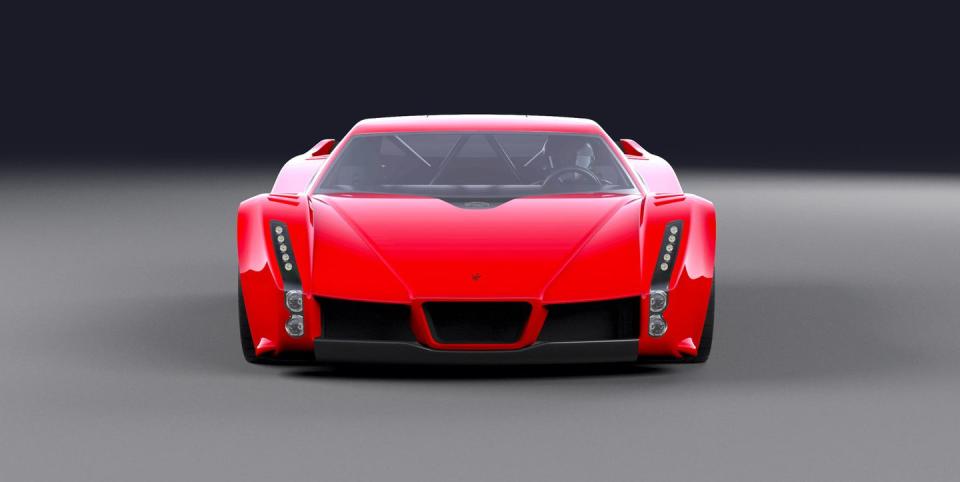
Palatov is working on a new sports car called the D8, with a ton of body shell and powertrain flexibility.
It can accommodate a V8 like the GM LT4, but most will be electric.
A new Palatov company called Modular Battery Technologies has big plans for EVs.
Dennis Palatov is exactly the kind of mad scientist you want working on building better sports cars. If, like all mad scientists, he is going to take over the Earth, the Earth will need more twisty mountain roads.
Palatov is an electrical engineer by training but has spent the last 13 years of his life making very cool, very compact race cars that have competed at Pikes Peak, Bonneville, and countless track days driven by their giddy and (understandably) very enthusiastic owners. Now he is building a new and very promising two-seat sports car called the D8. Because the D8 has the exact same 95-inch wheelbase as the original GT40, the D8 can accommodate a GT40 body, one of which in replica form he has in the shop. Like some of his earlier creations, the D8 can also come powered by a GM LT1 or LT4 V8, because just as someone is always going to want a GT40 body, someone is going to want small block. The car can also accommodate Palatov’s own-design aerodynamically efficient body powered by his own-design of modular electric battery packs.
We’ll take one of each, please.
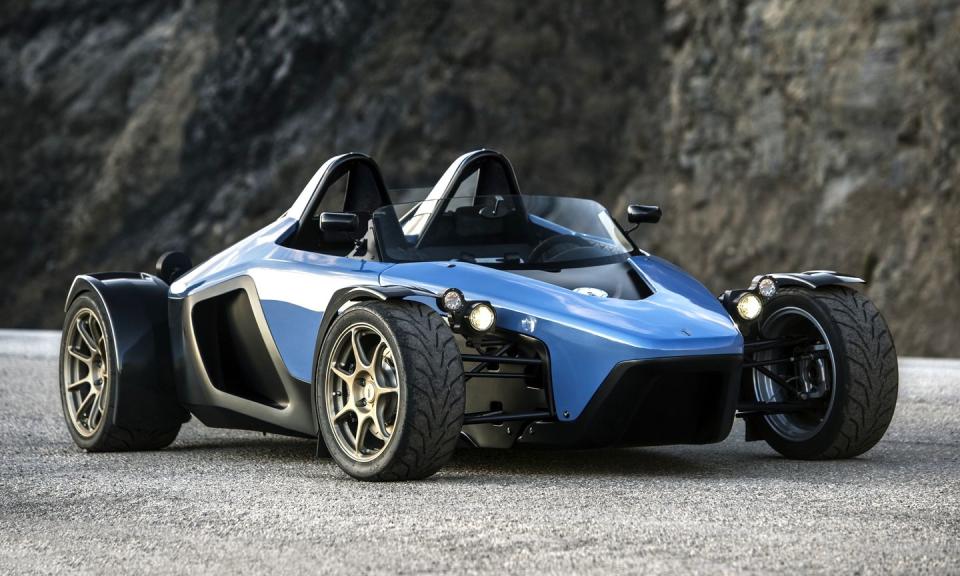
I got to drive several of Palatov’s earlier works, from the D4 to the Drakan, and man-oh-man if I had the $80,000 to $100,000 they cost I would stock a garage with them and build a track to race them on. All of them that I’ve driven provide a directness of feel through the wheel and through the seat of the pantalones, along with a perfect power balance, that nothing else in the world matches, from the Ariel Atom to the BAC Mono to the original Lotus Elise and Alfa Romeo 4C. Pick a crazy accurate sports car and the Palatov will likely out-track it.
So his next entry in the Pantheon of Palatov is this D8. So far, he has mocked up a chassis and is experimenting with different drivetrains.
“I’m pretty excited about the car, of course,” Palatov said yesterday by phone from his Portland, Oregon, shop. “It’ll be primarily electric. We’ll have gas engines, LT1 and LT4 for those who really want them, but primarily I’m designing it as an electric with Cascadia drivetrains.”
Work on the new car is going well.
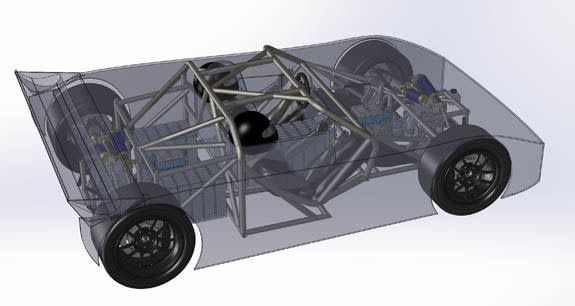
“It’s in the final design stages,” Palatov said. “I’m doing CFD (computational fluid dynamics), I’m doing the chassis design. And I’m doing the body work and the styling as well. We expect to have the first rolling, drivable chassis somewhere around the very end of the year. The bodywork will probably be ready by spring because we have to make the molds.”
The car is an evolution of the D1, D2, and D4, previous Palatov cars that have raced at all those places mentioned above. But if you take a look at the red car in the computer drawings, it looked to me like an Acura NSX. Maybe you see something else in it.
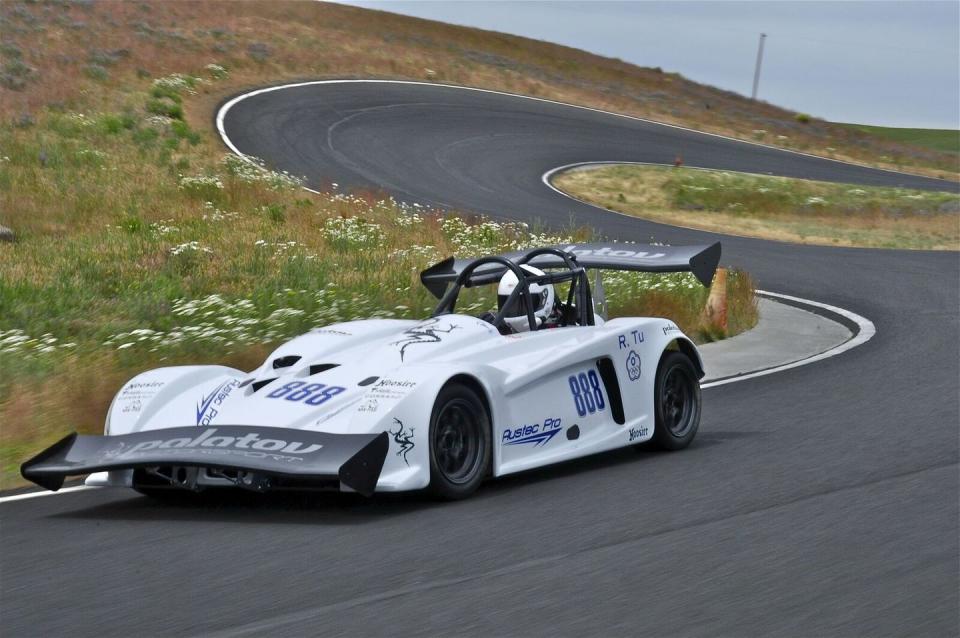
“It’s actually not obvious from the pictures, but it’s a fairly compact car. It’s actually only a 95-inch wheelbase and it’s 145 inches long, which is nine inches shorter than a Miata.”
He is completely certain about it fitting the rear-mid-mounted V8 drivetrain, likely with a Porsche G96 manual transaxle, because his earlier cars could fit that configuration. Suspension, as you can see in the drawings, is a double-wishbone pushrod setup.
Whether you can register it for the street is up to the laws in your individual state.
“It’s a little beyond the capabilities of our company to fully register it. But we’ll see. And that’s another reason for doing it as a replica, because we could potentially register it as a replica, or under (the new) low-volume (manufacturer law). Most states have ways of registering custom-built vehicles. And of course, with the electric drive train it’s automatically emissions compliant.”
The electric drivetrain. Yes, that may be the bigger news here. Palatov has big plans for an electric future.
“We’re launching another company in parallel, which is called Modular Battery Technologies. We’re looking to transform the way EV batteries are made. We’re looking to make them a commodity. And we’ve come up with some specific technologies that are patent pending right now that make it possible.”
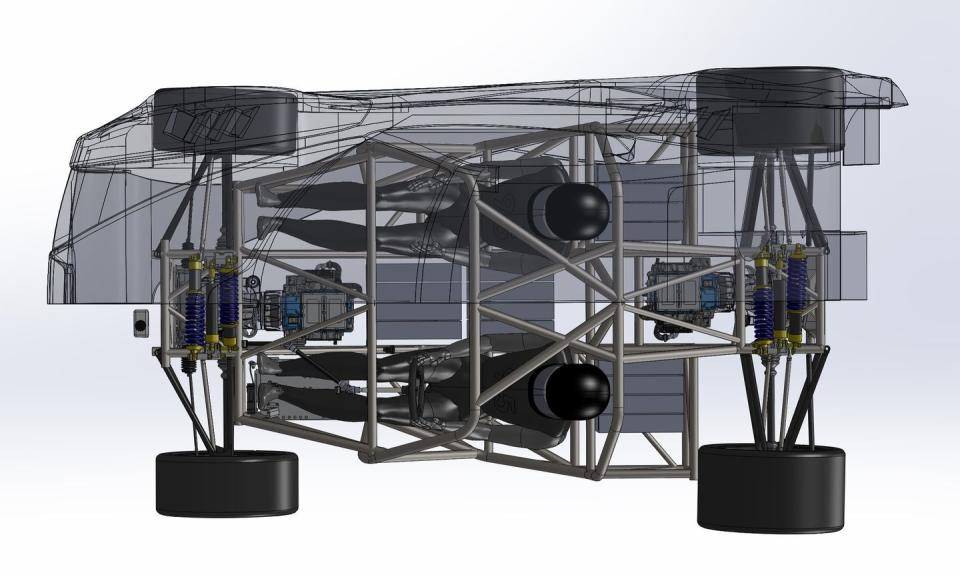
Palatov’s battery plan is to offer full-voltage modules, which is very different from how modules are done right now, he says. Now, modules are low-voltage and you stack them vertically. In his model they’re full voltage so you can put them in parallel, as many as you need.
“That lets you right-size the battery for the actual use, because a lot of people who are buying 400-mile Teslas are only actually driving 40-mile commutes. They’re hogging the resource. And they’re dragging 600 pounds of battery that they don’t need on every trip.”

 Yahoo Autos
Yahoo Autos 